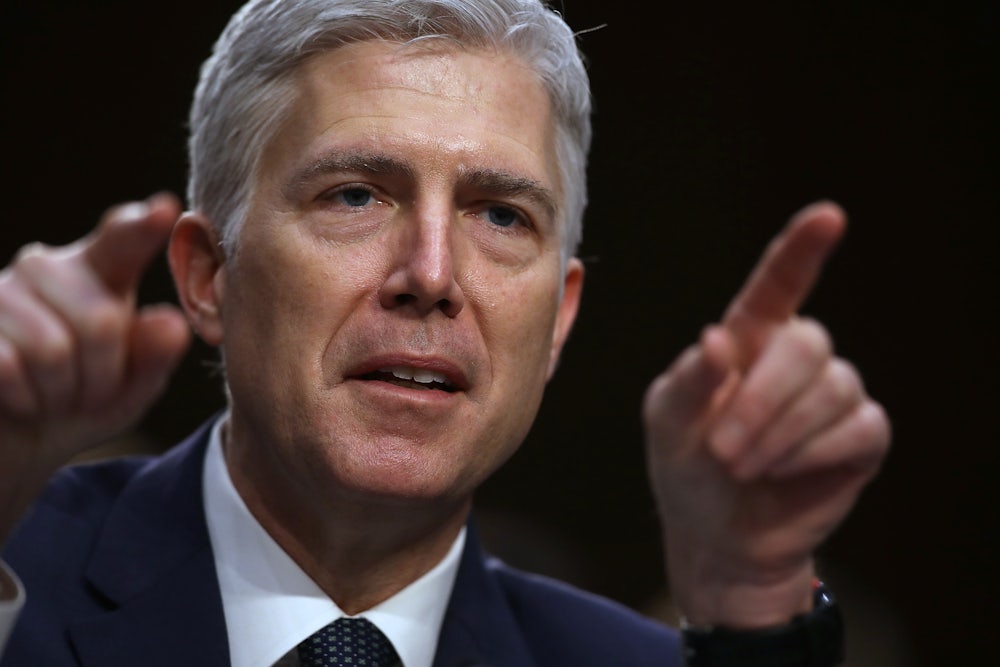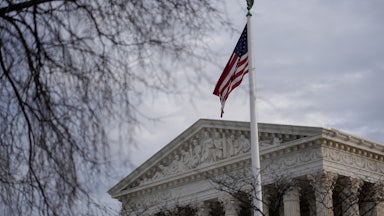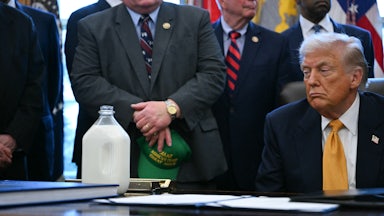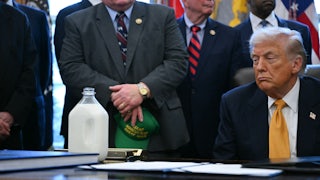In February 2017, Steve Bannon, then chief strategist of the Trump White House, pledged that the new administration would commit itself to “the deconstruction of the administrative state.” President Donald Trump was too inept to make much tangible progress on that front during his presidency. But in appointing three right-wing justices to the Supreme Court, Trump improved substantially the likelihood that it would fulfill Bannon’s promise, and the current docket furnishes the high court with three opportunities to do so.
In October, the Supreme Court heard oral arguments in the first of these three anti-regulatory cases, Consumer Financial Protection Bureau v. Community Financial Services Association of America, which challenged the funding mechanism for the Consumer Financial Protection Bureau, or CFPB, and may also threaten other similarly funded independent agencies, including the Federal Deposit Insurance Corporation and the Federal Housing Finance Administration.
In November, the Supreme Court heard oral arguments in the second such case, SEC v. Jarksey, about which I wrote last week. In this case, a hedge fund manager fined $300,000 by the Securities and Exchange Commission for securities fraud is challenging the SEC’s ability to do that on a variety of grounds, among them that Congress may not delegate such authority to the executive branch.
Finally, on January 17, the justices will hear oral arguments in Loper Bright Enterprises v. Raimondo. This is the most sweeping of the three anti-regulatory cases. It’s also the one the business lobby most wants to win, and the one it most likely will win.
It makes sense for conservatives to move the war against the administrative state from the electoral sphere to the judicial one, because this has never been an issue that gets voters particularly excited. According to Gallup, 44 percent believe government does too much to regulate business and industry; 31 percent believe government does the right amount; and 25 percent believe government does too little. That’s a pro-regulatory majority, with 56 percent saying government should regulate at least as much as it does now versus 44 percent saying government should regulate less. There is, of course, a substantial partisan divide, with about as many Republicans saying (on a related poll question) that the government does too much to solve our country’s problems (78 percent) as Democrats saying the government does too little (75 percent).
Gallup’s numbers show that Trump’s war against regulation grew less popular as his administration progressed. In September 2017, eight months into Trump’s presidency, 45 percent said there was too much government regulation. After that, the anti-regulation constituency shrank steadily, ending in September 2020 at 36 percent (compared to 63 percent who said government should regulate at least as much as it was doing already). Under George W. Bush, by contrast, the size of the anti-regulation constituency mostly fluctuated only a few points, standing at 41 percent on the eve of September 11, 2001, and at 38 percent in September 2008.
What did Trump do to make anti-regulatory politics—never favored by the majority—less popular than under Bush? For one thing, he waged a nasty war against the civil service, disrupting government unions, tightening his leash on administrative law judges, and trying to replace government lifers with political appointees. Probably not many people heard about these efforts, but if they did I doubt they went over well with a public already hostile to political opportunism. Trump has promised to redouble these efforts in a second administration; early talk of what’s to come suggests that Trump and his allies plan to remake the civil service into an instrument of political retribution.
More likely, declining poll numbers for deregulation reflect how foolish Trump made himself look by losing a slew of legal challenges to agency deregulation initiatives. According to a 2021 law journal article (“Tired of Winning”) by Bethany A. Davis Noll, litigation director for New York University’s Institute for Policy Integrity, the Trump administration won only 23 percent of legal challenges to its agency actions (which were almost entirely deregulatory), compared to a success rate of about 70 percent defending agency actions in previous administrations. Perhaps because Trump’s administration was more interested in appearing as though it were dismantling the administrative state than in actually dismantling it (necessarily a slower and more deliberative process), Trump got shot down again and again by federal judges.
Loper Bright Enterprises v. Raimondo addresses the difficulty of killing regulations by handing the job over to judges. It invites the Supreme Court to reverse its 1984 ruling in Chevron USA v. Natural Resources Defense Council. That decision created what’s known as “Chevron deference,” which directs federal judges to give regulatory agencies broad latitude in interpreting their statutory instructions. In 1984, Chevron was judged to be a conservative ruling because it gave President Ronald Reagan’s Environmental Protection Agency greater latitude to subvert the intent of the Clean Air Act. In a 1989 law review article, Supreme Court Justice Antonin Scalia (who hadn’t been on the high court when Chevron was decided) praised Chevron to the skies, saying it “more accurately reflects the reality of government, and thus more adequately suits its needs.”
Twenty years later, Scalia had changed his mind, and earlier this month his son Eugene, who was labor secretary under Trump, wrote in The Wall Street Journal that the trouble with Chevron deference is that agency chiefs no longer defer to agency lawyers; they just do whatever they want. Naturally Eugene Scalia, like his father a lawyer and also a onetime solicitor (i.e., chief lawyer) at the Labor Department, excepted himself from this harsh analysis.
Why did conservatives fall out of love with Chevron? I am not a lawyer, and therefore will furnish not a legal theory of the case but, rather, a practical one. When Chevron was decided, most federal judges were appointed by Democrats and wanted to press federal agencies to follow their regulatory mandates as aggressively as possible. Conservatives wanted these liberal judges to back the hell off and allow Reagan’s EPA to follow regulatory mandates much less enthusiastically. Did I mention that the industry-friendly EPA administrator in question was Ann Gorsuch, mother of Supreme Court Justice Neil Gorsuch?
Today most federal judges are still appointed by Democrats, but the balance is much more even (433 Democratic-appointed versus 372 Republican-appointed), the Democratic appointees are less liberal, and the Republican appointees are much more conservative. Also, the Supreme Court is more conservative than it’s been in nearly a century. These days if you want to kill a regulation all you have to do is file your legal challenge in a district court that feeds into the reactionary Fifth Circuit, which (even with Chevron still in place) routinely plays Whac-A-Mole with federal regulations. All these factors have prompted Republicans to conclude that the judicial overreach they previously reviled comes in pretty handy as demographics undermine the GOP’s electoral clout. Judges must be set free to attack the administrative state.
The Supreme Court appears more than ready to reverse Chevron. Certainly, Neil Gorsuch has no use for it. “Rather than say what the law is,” he wrote in a 2022 dissent, “we tell all those who come before us to go ask a bureaucrat [italics mine].” Is that any way to talk about your mother? Not in my house. Bureaucrats are often called unaccountable, but in fact their actions are accountable to the public in the sense that the agency chiefs and presidents they work for must answer for their decisions. Federal judges, on the other hand, are appointed for life and can do whatever they want. Given that the war against the administrative state is not especially popular, the judiciary is naturally where Republicans and the business lobby will end up fighting it. Ann Gorsuch died 20 years ago, but if she were alive today she would probably congratulate Neil for getting it just right.










